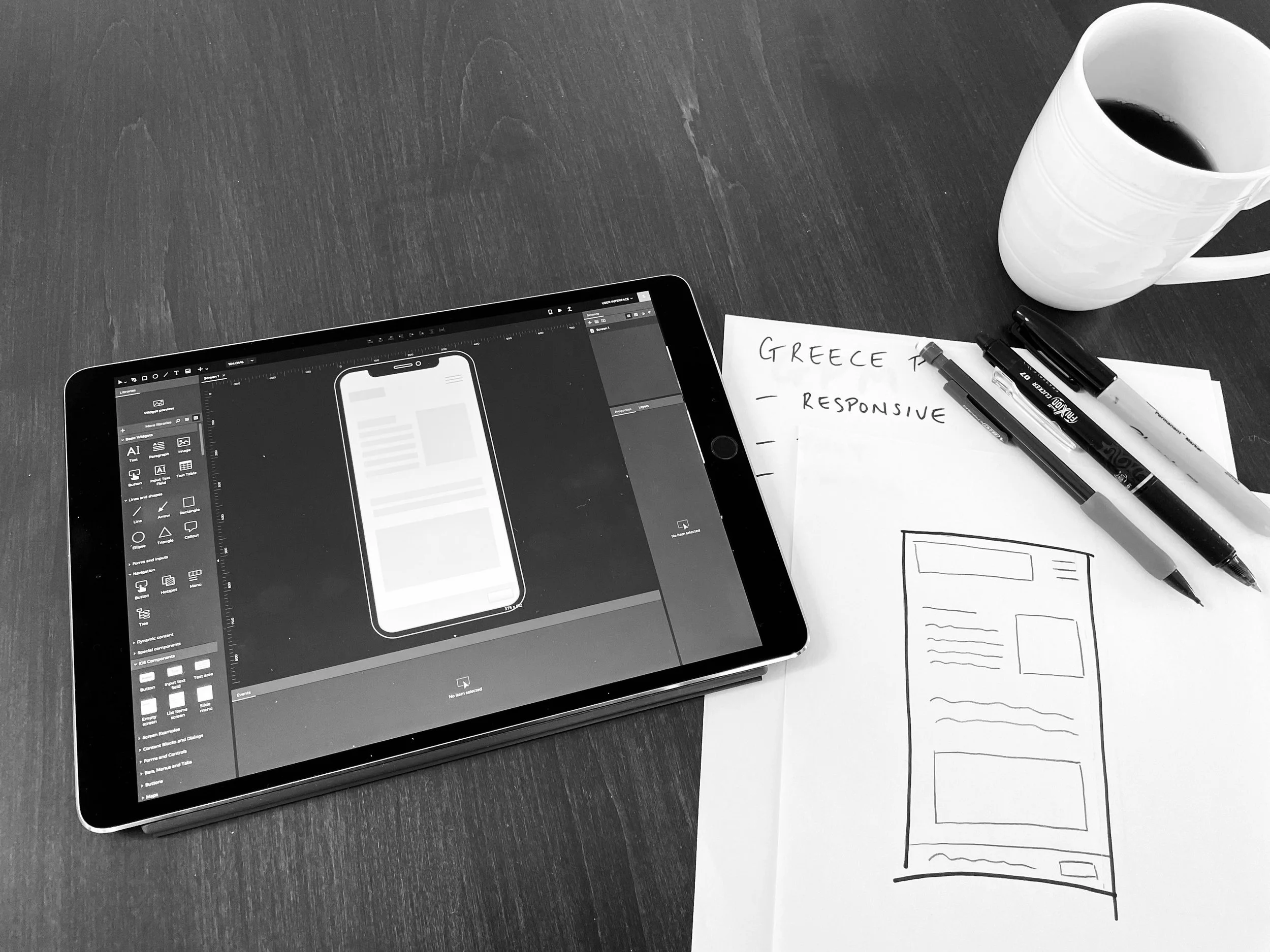develop website for new private practice
Methods: discovery research, wireframes, competitive analysis, rapid iterative testing and evaluation, pitch deck
Timeline: approximately 3 months
Tools: paper, pencil, post its, pages, squarespace, wordpress
background
The owner, a physician, knew she needed a website, but did not know what content she wanted/needed on the website other than the address and phone number. We started with a kickoff meeting followed by several workshop sessions, using paper, pencils and sticky notes, to determine what the business needed. I began by understanding what their patients might need and what the client might want to communicate. It turned out that the client needed more than a website. Given the short time frame and the client’s busy schedule, we agreed to proceed with short, collaborative workshops. I worked outside of those workshops on all aspects of the project.
Throughout the project we met every week for approximately one hour. Between workshops, we corresponded through phone calls and emails.
objectives, requirements & strategy workshops
In one week, in a few 30 minute workshops using paper, pencils and sticky notes, we collaboratively defined the objectives and strategy. I facilitated a brainstorming session to elicit requirements. We then prioritized the next steps.
After this workshop I outlined my iterative design and research strategy which included: discovery research, requirements, competitive analysis, interviews, paper prototypes, wireframes, design, rapid iterative testing and evaluation, and development.
brand & mission workshop
The next workshop turned into a workshop about the brand, mission, strategy and target groups. This was not part of the original scope but the client felt stuck without having this worked out. I agreed to assist with this although it was not part of the original scope. After the brand workshop I designed three options for the visual style of the brand based on the client’s requests. These were sent to the client, discussed in emails, and briefly confirmed at the beginning of the next workshop.
requirements interviews
Given the short timeframe, I conducted short 15-20 minute interviews with 7 volunteers and 2 office staff members in one day. The data from the interviews was analyzed, presented to the owner, and integrated into the paper prototypes.
research & design workshops
In the following workshop we explored the findings from the competitive analysis and target group interviews. We then used sticky notes on the wall to collaboratively develop elements of the information architecture. Using paper and pencils I sketched low fidelity wireframes. In a subsequent workshop, using the results from the brand workshop, I presented three homepage designs with varying site styles. We collaboratively worked to refine the style, color scheme, typography, and logo. In the next session we reviewed benefits and drawbacks of Squarespace and Wordpress and the client chose to use Wordpress.
rapid iterative testing and evaluation workshops
I designed and facilitated rapid iterative testing and evaluation workshops. Seven volunteers and 2 practice employees tested the prototypes in short 15-20 minute sessions. Data from the testing was presented to the owner and integrated into the designs. I designed and developed the website in Wordpress following these workshops. Three volunteers and 2 employees then tested the development website in several short 15-20 minute sessions. Revisions were made following this session.
finishing touches workshop
The results of the testing and the final design were presented to the owner. Minor refinements were agreed upon. Additional requirements were identified to be addressed at a later date.
reflection
The collaborative nature of the workshops allowed us to succeed in the short time frame. The short sessions, many times over lunch were not ideal, but necessary given the client and timeframe. If I could change one thing, I would have begun with the competitive analysis. The competitive analysis seemed to encourage the most confident actiontionable results from the client. Seeing the competitive analysis earlier in the project might have brought about some ideas and decisions in the earlier phases of the project.
